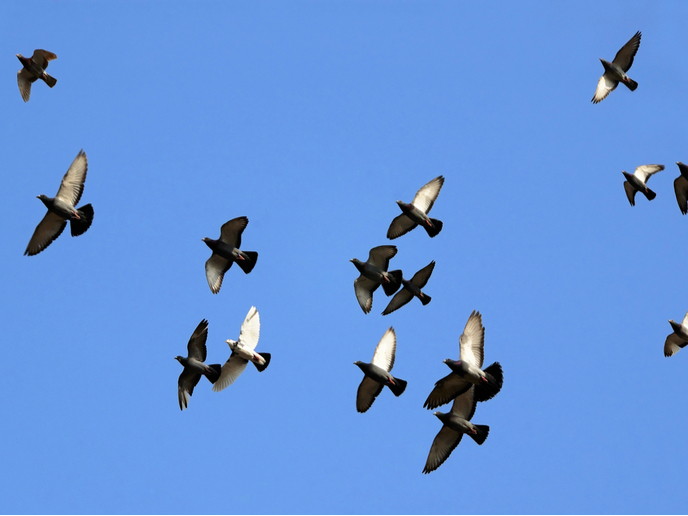Two heads better than one? Homing pigeons flap faster to fly together
Wildlife researchers have long tried to understand why birds fly in flocks, ranging from structured V-formations to loose clusters that involve complex aerodynamic interactions between group members. Frequently cited benefits of collective travel include improved flight efficiency, enhanced navigation and greater safety from predators. Partially supported by the EU-funded HawkEye project, a team of researchers have found that homing pigeons expend more energy flying in pairs rather than solo. Their findings were published in the journal ‘PLOS Biology’. “As expected, paired individuals benefitted from improved homing route accuracy, which reduced flight distance by 7% and time by 9%.” In a press release by the University of Oxford’s Department of Zoology, the study’s lead author Dr Lucy Taylor says: “The results of this study were completely unexpected. Energy is the currency of life so it’s astonishing that the birds are prepared to pay a substantial energetic cost to fly together.” The team used a high-precision global positioning system and accelerometer bio-loggers to examine the flight characteristics of homing pigeons, or Columba livia, when flying in pairs compared to flying alone. The researchers hypothesised that “birds increase their wingbeat frequency when flying together so as to enhance their manoeuvrability and flight stability,” as noted in the journal article. Dr Taylor says: “Imagine trying to coordinate with and avoid hitting another small object travelling at around 44 miles [70 km] per hour. This is nearly two times faster than an Olympic sprinter, and the birds can move up and down as well as left and right. For a pigeon, flapping your wings faster will both give you faster reactions and greater control over your movements, and will help keep your head stable making it easier to track where the other bird is.” Analysing other bird flight patterns to help future drone design The ongoing HawkEye (Vision-based Guidance and Control in Birds, with Applications to Autonomous Unmanned Aircraft) project draws the study of birds and aircraft together under one roof. Another study partially supported by the project looked into the flight trajectories of five captive-bred Harris’ Hawks during flights against an erratically manoeuvring dummy rabbit target. Its findings were published in the journal ‘Nature Communications’. A press release by the University of Oxford states: “The researchers found that Harris’ Hawks use a mixed guidance law, in which their turn rate is determined by feeding back information on the angle between the direction to their target and their current flight direction, together with information on the rate at which the direction to their target is changing.” According to the same press release, the findings have implications for capturing rogue drones in crowded areas. The study could also inspire future drone design. Quoted in the press release, co-author Prof. Graham Taylor says: “Last year’s Gatwick incident showed just how far we are from being able to remove rogue drones quickly and safely from a large open space, let alone the cluttered airspace of an urban environment. Hawks are masters of close pursuit through clutter, so we think they have a thing or two to teach us about how to design a new kind of drone that can safely chase down another.” For more information, please see: HawkEye project
Countries
United Kingdom



